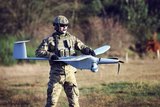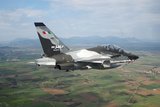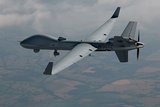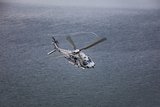Bell-Boeing gains big Osprey logistics contract
MV-22B Osprey tiltrotor aircraft operated by the USMC. (Photo: USN/Petty Officer 3rd Class Patrick Gearhiser)
The Bell-Boeing JV on 6 January received a performance-based logistics deal worth up to $1.64 billion for the repair, replacement, required availability, configuration management, and inventory management for supply support for 228 V-22 Osprey tiltrotor aircraft.
The five-year contract from Naval Supply Systems Command Weapon Systems Support covers MV-22B variants for the USMC plus CMV-22s for the USN and CV-22s for the USAF.
Work will be performed in Fort Worth, Texas (97%) and Ridley Park, to be finished by December 2026.
Osprey customers include the US (with 472 aircraft ordered) and Japan (with seven aircraft delivered out of a total order volume of 17).
Related Equipment in Defence Insight
More from Air Warfare
-
![Poland air report: Drones, transport aircraft and tankers dominate potential procurement plans]()
Poland air report: Drones, transport aircraft and tankers dominate potential procurement plans
With a rising defence budget and equipment list, Poland’s air market is set to grow as the country continues to modernise its transport and helicopter fleets while seeking out uncrewed aerial vehicles and loitering munitions.
-
![Portugal signals interest in establishing A-29N final assembly line]()
Portugal signals interest in establishing A-29N final assembly line
As the launch customer for the NATO-configured variant, Portugal also took delivery of the first five A-29N aircraft from its order for 12, placed in 2024.
-
![Leonardo signs contract on Austria’s M-346 aircraft order]()
Leonardo signs contract on Austria’s M-346 aircraft order
The first of the 12 M-346 aircraft are expected to be delivered to the Austrian Air Force by 2028, according to the company.
-
![2025 UAV market review: $7.8 billion in new contracts signed as US leads spending]()
2025 UAV market review: $7.8 billion in new contracts signed as US leads spending
Qatar and Indonesia followed the US’s high spending on new uncrewed aerial vehicle contracts across 2025, while MALE and micro drones and loitering munitions were particularly popular subcategories this year.
-
![German Navy in “ramp-up” phase as it welcomes first NH90 Sea Tiger delivery]()
German Navy in “ramp-up” phase as it welcomes first NH90 Sea Tiger delivery
With all 31 aircraft set to be delivered by 2030, the helicopters will gradually replace the ageing Sea Lynx fleet which are due to be retired in 2026.






















